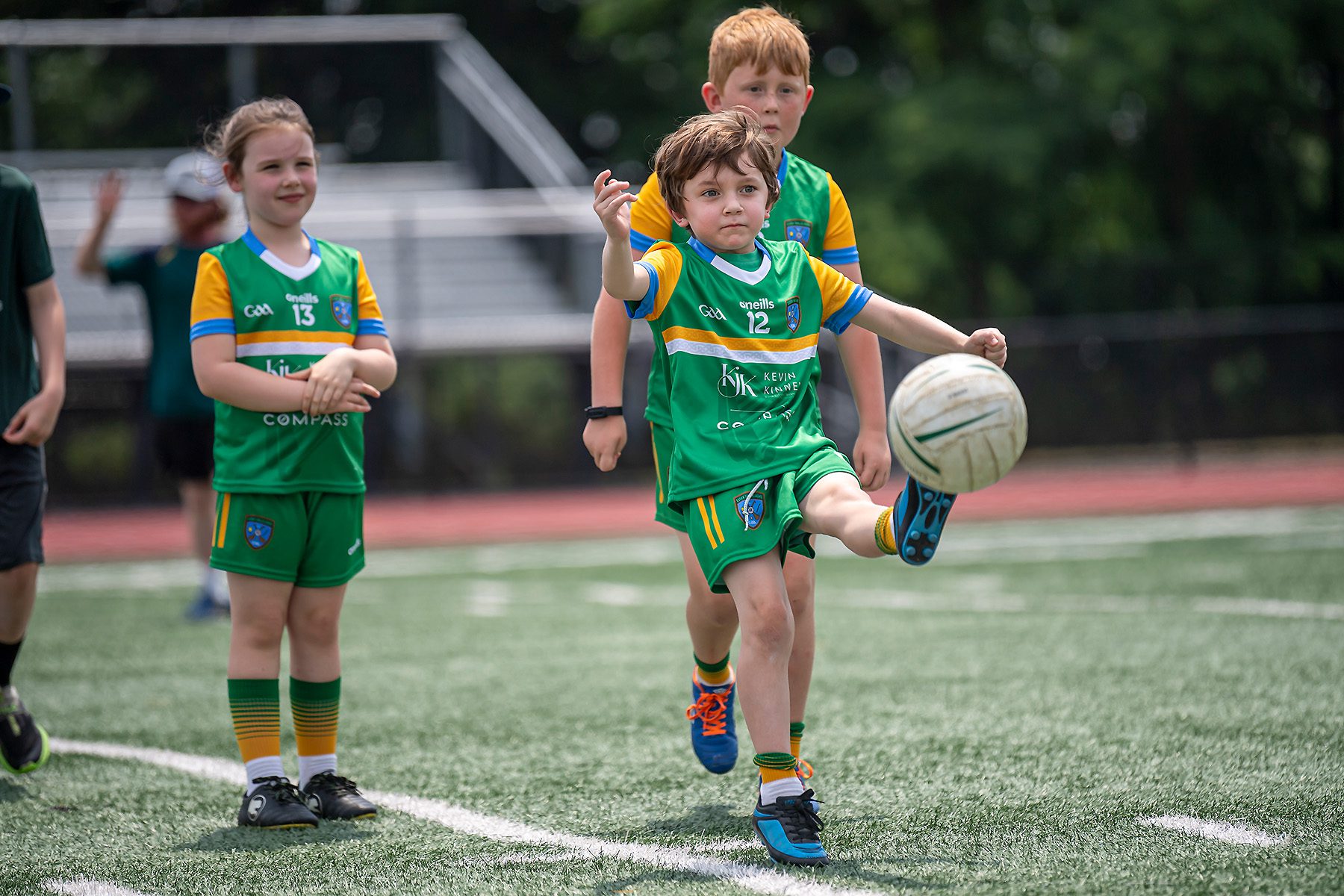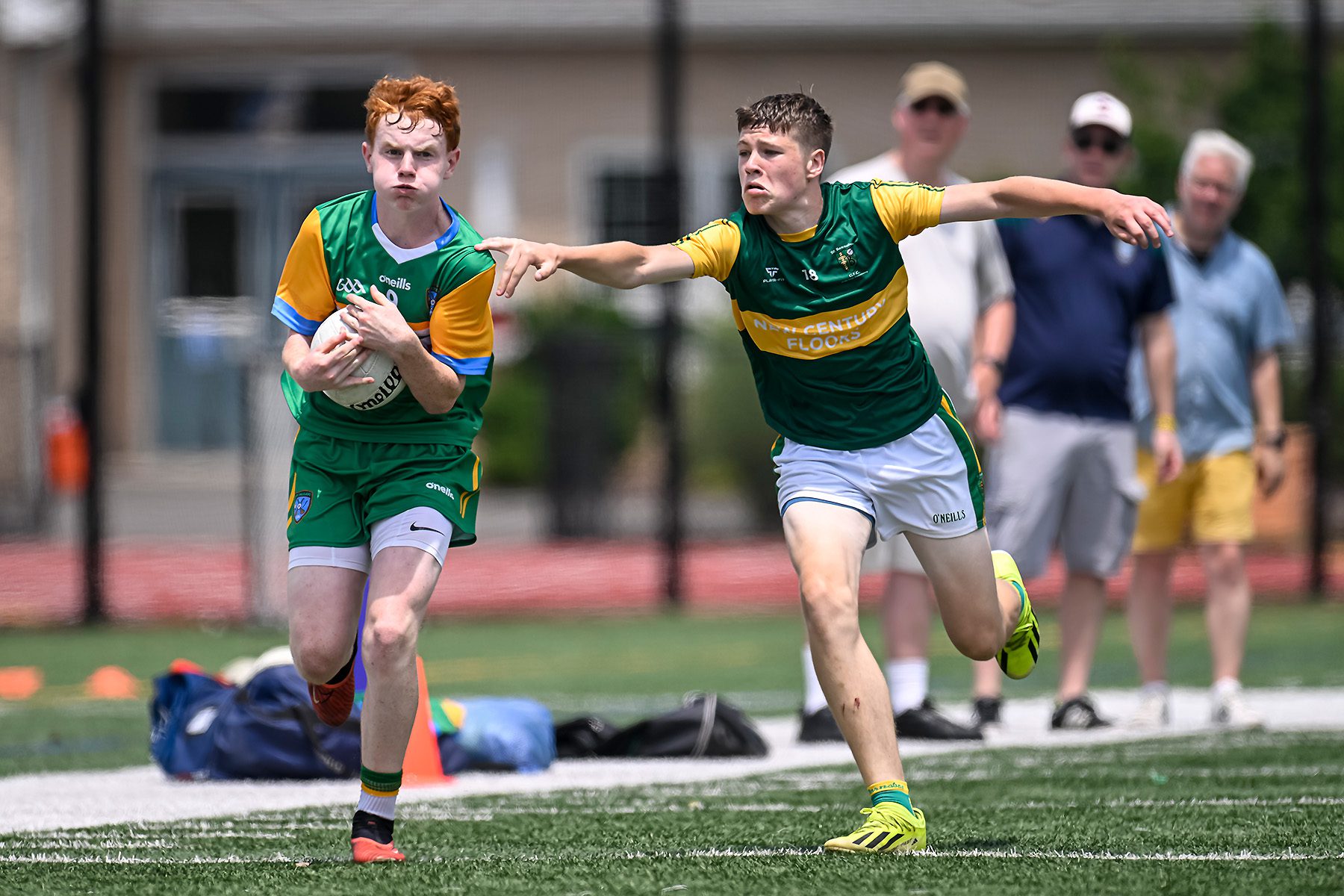What is Gaelic Football?

Gaelic football seamlessly blends the excitement of soccer, the skills of basketball, and the strategy of football. Played with a distinctive round ball, Gaelic football takes place on a rectangular field where two teams compete to score points by either kicking the ball into the opponent’s goal or over the crossbar.
A team consists of 15 players on the field at a time. Players are divided into various positions, each with specific roles and responsibilities.
The game is fast-paced and action-packed, requiring a combination of athleticism, precision, and teamwork. Players can pass the ball by kicking or punching it, adding an extra layer of strategy to the game. Unlike soccer, players can also catch the ball directly from the air, which opens up a range of creative playing styles and strategic opportunities.

Rules Overview
- Duration: Matches typically last for 60 minutes, divided into two halves of 30 minutes each.
- Scoring:
- Goal: If a player kicks the ball into the opponent’s goal, it’s worth three points.
- Point: If a player kicks the ball over the opponent’s crossbar, it’s worth one point.
- Passing: Players can pass the ball by kicking it or using their open hand to punch it. However, they can’t throw it.
- Soloing: Players can bounce the ball on their foot and kick it back into their own hands, allowing them to move with the ball.
- Mark: If a player catches the ball from a kick that has traveled a certain distance, they can claim a “mark,” which gives them a free kick.
- Tackling: Legal tackling involves attempting to dispossess the player with the ball. Tackles should be aimed below the shoulders and above the hips.
- Advancement: Players can’t run with the ball for more than four steps without soloing it or bouncing it. This rule prevents excessive running.
- Kickouts and Kick-ins: After a score or when the ball goes out of bounds, the goalkeeper kicks the ball back into play from their small square. If the ball goes out of bounds along the sideline, it’s kicked back in by a player from the team that didn’t touch it last.
- Fouls and Free Kicks: Fouls, like illegal tackles or overcarrying the ball, result in free kicks for the opposing team. Free kicks allow players to kick the ball without being challenged by opponents from a set distance.
- Advancing the Ball: The aim is to advance the ball up the field through passes, kicks, and teamwork. Players need to strategize to create opportunities to score points.
- Winning: The team with the most points at the end of the match wins.

Have Questions or Ready to Join?
Whether you have questions about our Gaelic Football program or are ready to join our great community, we're here to assist you every step of the way. Reach out to us today and let's kick-start your Gaelic Football journey together!
*Professional photos courtesy of Richard Morris.
